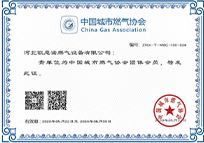
9 月 . 23, 2024 15:09
Back to list
Gas Safety Relief Valve - Ensuring Safe Pressure Management in Gas Systems
Safety Valves for Gas Systems Ensuring Reliability and Safety
In the realm of gas systems, safety is paramount. One of the key components designed to maintain safe operation under various conditions is the safety valve, often referred to as a pressure relief valve. These valves serve a crucial purpose, preventing the dangerous buildup of pressure that can lead to catastrophic failures and hazardous situations.
.
The construction and design of safety valves are dictated by rigorous engineering standards, considering factors such as the type of gas, expected pressure ranges, and environmental conditions. The selection of materials is also critical. Valves must withstand corrosive substances, extreme temperatures, and high pressures without compromising their integrity. Regular maintenance and testing are essential to ensure that these components function correctly and respond effectively to pressure fluctuations.
صمام تنفيس أمان الغاز

Additionally, safety valves are not standalone devices. They are part of a broader safety management system that includes pressure gauges, alarms, and automated shutdown systems. Together, these systems work to monitor gas pressure continuously and alert operators to any anomalies that may arise. Training for personnel in proper operational procedures and emergency response is equally important, as human factors can significantly influence safety outcomes.
Moreover, advancements in technology are leading to the development of more sophisticated safety valves with enhanced features. These modern valves may incorporate smart technologies, allowing for real-time pressure monitoring and data analysis. Such innovations not only increase safety but also improve operational efficiency, providing operators with valuable insights about system performance.
In conclusion, safety valves play a critical role in the safe operation of gas systems. Their design, construction, and integration within a comprehensive safety management framework underscore the importance of protecting both people and equipment from the dangers associated with gas pressure. As technologies evolve, the industry must continue to prioritize the development and maintenance of reliable safety valves to ensure a secure working environment.
Latest news
-
Unlocking The Quality Gas Pressure ReducersNewsNov.01,2024
-
The Role of Gas Pressure Reducing StationsNewsNov.01,2024
-
The Importance and Functionality of Safety Relief ValvesNewsNov.01,2024
-
The Essential Role of Safety Valves in Natural Gas ApplicationsNewsNov.01,2024
-
The Essential Role of Gas Pressure RegulatorsNewsNov.01,2024
-
Enhance Your Premium Gas FiltersNewsNov.01,2024

